Campo di Siena

1 source image.
 1 source image. |
||
|
|
 1 source image. |
||
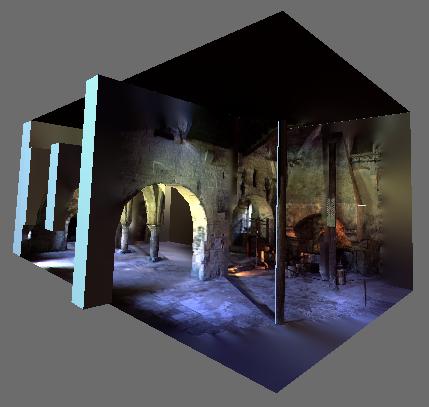 Unretouched Canoma model Quicktime movie.(900Kb) This model by Gerald Guyomard - Paris. You can also see the Metastream 2 version (293Kb) or download an zipped OBJ file for importing into Bryce, Ray Dream etc. |
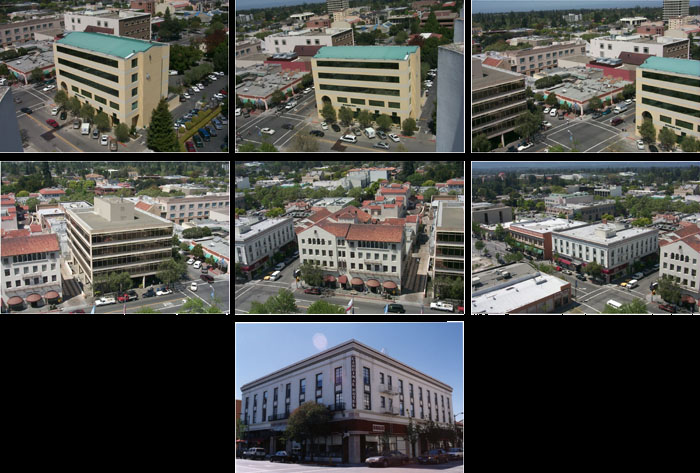 Seven photographs of a street scene in downtown Palo Alto, northern California. Modeling time 3 hours. The first 6 pictures were taken from the City Hall building roof, and the animation initially follows the path on the roof taken by the photographer. |
||
 Quicktime movie (7.3Mb) of unretouched Canoma scene. Note how objects far away are not actually modeled, but projected into a theatre like backdrop (made of vertical rectangles) |
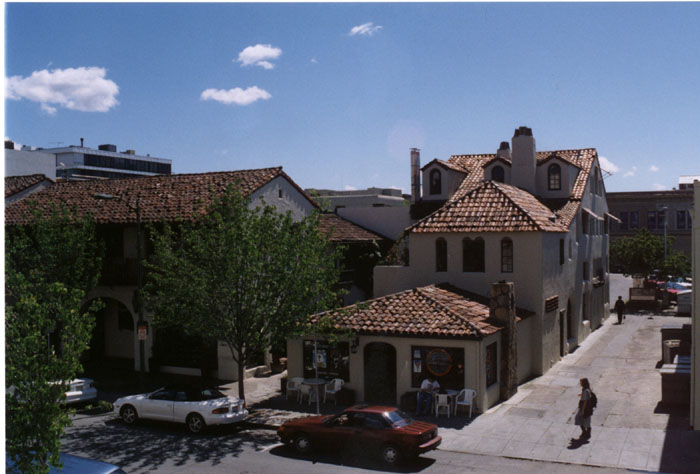 Single photograph of a street scene in downtown Palo Alto, northern California. Modeling time 25 minutes. |
||
 Quicktime movie (1.2Mb) of Canoma scene (sky background slightly retouched) Notice the cars, tree and person on the right are very simple extrusions or flat polygons. Nevertheless, they convey a good sense of the objects portrayed. |
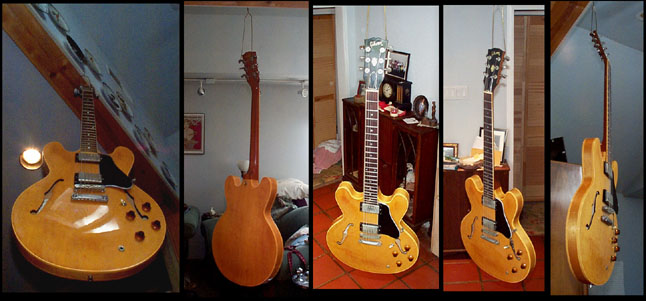 Five images of a guitar suspended from the ceiling. |
||
 Quicktime movie (708Kb) of unretouched Canoma scene. This was a little tricky to model since there is no "ground plane". Joe Grover created this one (see also his excellent Poser movies) A translation sweep (extrusion) is used for the guitar body itself, and it has quite a few contour points, making the body appear rounded. |
 Source: 7 images of the Carousel du Louvre arch in Paris. |
||
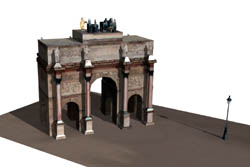 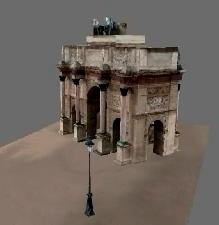 On the left is a Ray Dream Studio rendering of the final Canoma model. (There was quite a bit of retouching in Photoshop). Or you can see a Quicktime movie.(845Kb) Model by Gerald Guyomard. |
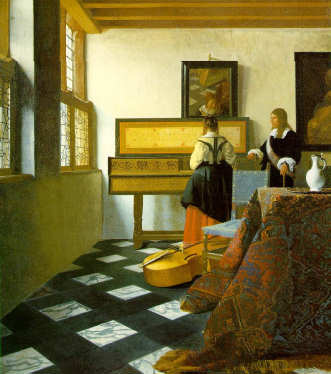 Source: Johannes Vermeer, The Music Lesson,1662-65, oil on canvas, London, Buckingham Palace. |
||
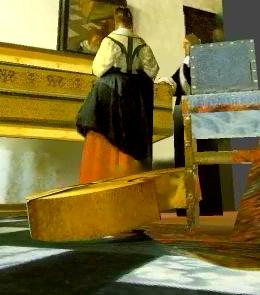 Vermeer was a Dutch master who most likely used a Camera Obscura optical instrument for his paintings. The frame above is from the Quicktime movie and shows a very different viewpoint from the original painting. Prof. Philip Steadman has written a fascinating book about Vermeers Camera, in which he shows how the artist could have know about and used the Camera Obscura. He also reconstructs the scenes used in several of Vermeers paintings using techniques and reasoning similar to Canoma (although his work predates Canoma). There is also a website on the subject. Another historian, Kees Kaldenbach, is reconstructing the famous "A View of Delft" painting, and some students at the University of Delft are using Canoma for part of that project. |
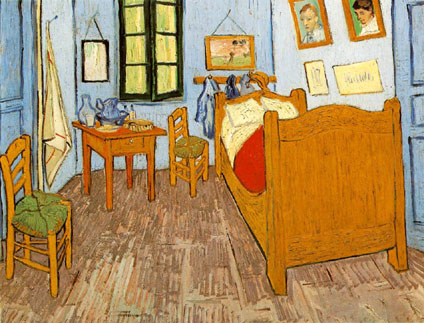 Source: Vincent Van Gogh, La chambre de Van Gogh à Arles (Van Gogh's Room at Arles),1889, oil on canvas, Musee d'Orsay, Paris. |
||
 Once again, a non-photographic image was used to feed Canoma. This one was a little tricky since the artist likes to draw each object from a slightly different perspective (and Canoma likes consistent perspective) but it was possible to approximate things quite well. Quicktime movie.(1Mb) |
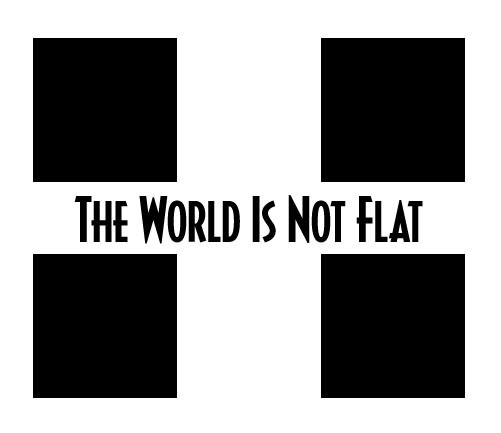 Single source image. |
||
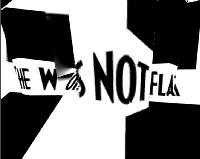 This is getting pretty trippy. Canoma can be used to "deconstruct" any flat image into a 3D scene. You can just model some arbitrary objects on top of a 2D image. From the original viewpoint things look just fine, but as you move around -see for yourself Quicktime movie.(940Kb) The effect is especially weird when you take a 2D image that encourages the brain to interpret it as pure 2D: a page of text, a spreadsheet with regular structure etc. The brain gets confused between the tension of interpreting the pieces of correct 2D information coming in and the quite different 3D interpretation caused by moving around in the scene. Lewis Carroll would have liked it. Deconstructing 3D images into different 3D shapes is also interesting... If you liked this, you should also check out Chris Casadys (aka Tilenut) work with Canoma which is impressive. In the same "we will trick your mind" vein as the above, look at his Picasso Deconstruction, Jelly Experience, Bauhaus watercolor Bisected Schizm. |
 Single source image. |
||
|
|
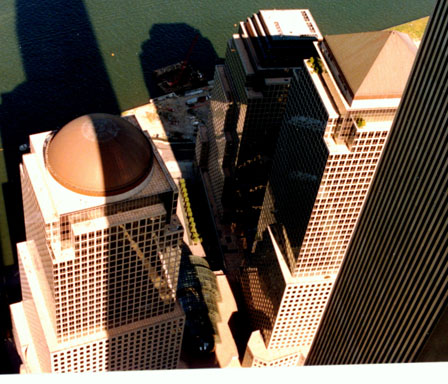 Modeled from a single photograph above, taken from one of the two World Trade Center towers in Manhattan. |
||
 Quicktime movie (1Mb) of unmodified Canoma scene. |
 Left and right building modified using Photoshop filters. Center building annotation added. Quicktime movieAVI movie |
 Same scene, but a different filter applied to left building (and different flight path). AVI movie |
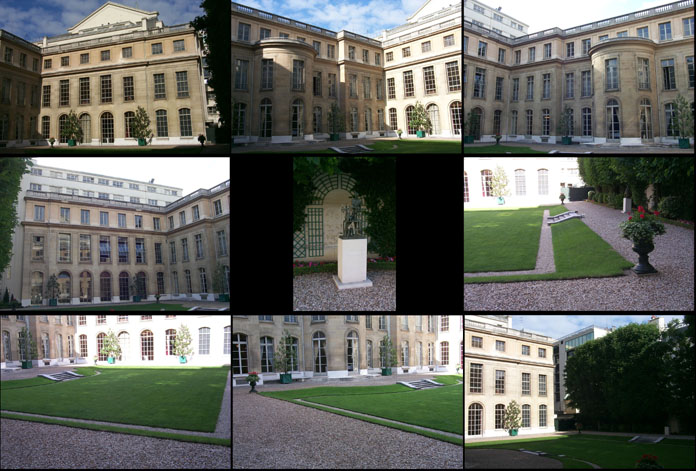 9 source images. |
||
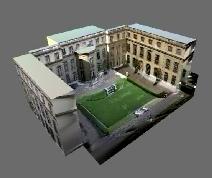 Unretouched Canoma model Quicktime movie.(2.4Mb) This was just outside from where we had a press conference introducing Canoma (and Metstream and Metaflash) to the French press and Metacreations users. A simpler model was created in 15 minutes before the actual press conference started. I finished the rest on the plane. |
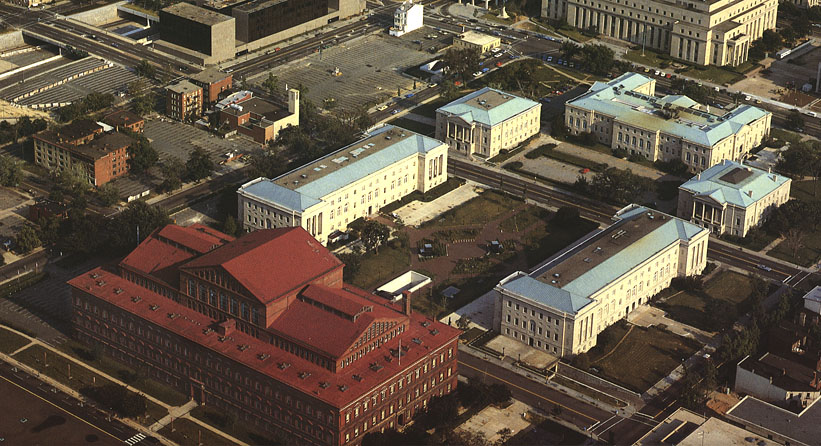 Modeled from a single photograph above, scanned in from Robert Camerons excellent "Above Washington" (Used with permission) This picture is also used in the Canoma tutorials. Aerial photographs provide great source material for Canoma because they show a nice perspective (eg. 3 sides of a cube), and obstructions like trees or people are less of a problem. |
||
 3 versions of the same model with same flight path, glued together & dissolved in Adobe Premiere: first the unmodified scene as it comes out of Canoma, second a craquelure filter is applied to all surfaces. Finally, a "Graphic Pen" filter is applied to all surfaces. |
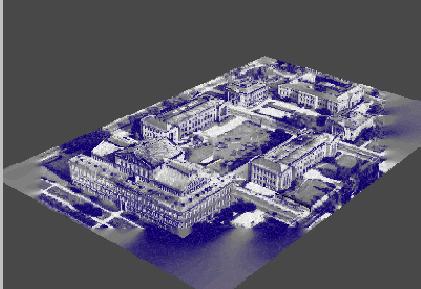 Quicktime movie - Different flight path, now surfaces were treated with a Dry Brush filter. You can fly through all kinds of artistic environments, much like in the movie "What Dreams may Come" with Robin Williams. Architects or project developers could show the urban context of their proposed development in a "toned-down" or low contrast version like this, and keep their own building in full color, automatically guiding the viewers eyes to the "important" structure while still giving cues about context, sightlines, etc. |
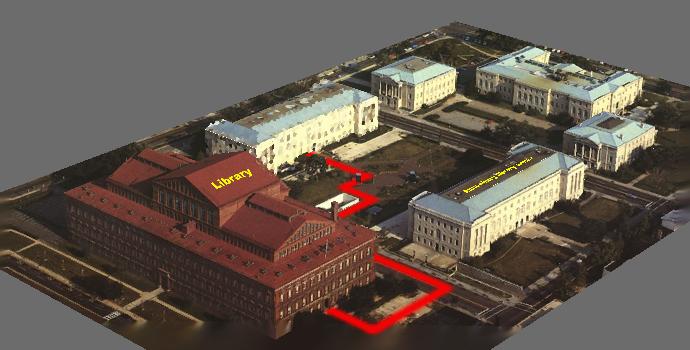 Here some textures have been edited: explanatory annotations like text labels, prices, product names, building functions etc. are examples. Also, a "walking path" in the style of the Boston Freedom Trail has been painted onto the ground plane (rather crudely). And the left building has gone through a Crystallize filter. You can imagine web sites presenting local information (like sfgate.com or yahoo local) using graphics like these to guide people to the sights of the city. (Or the nearest Chinese restaurant) Metastream 2 file (327Kb) |
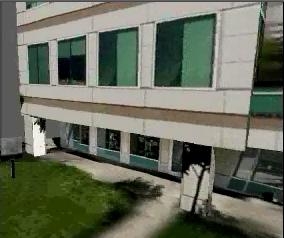 This model was done in the car just before a demo of Canoma for Steve Jobs. We arrived half an hour early, took some pictures with a digital camera and whipped this together. Uhm - and no, he didn't like it haha... Quicktime movie |
 Modeled from 4 photographs of a detailed paper model of the Vatican. Paper model & original photographs by Chris Casady, Canoma model by Gerald Guyomard (who also did the excellent cave model at the top of this page). 3 MB Quicktime movie |